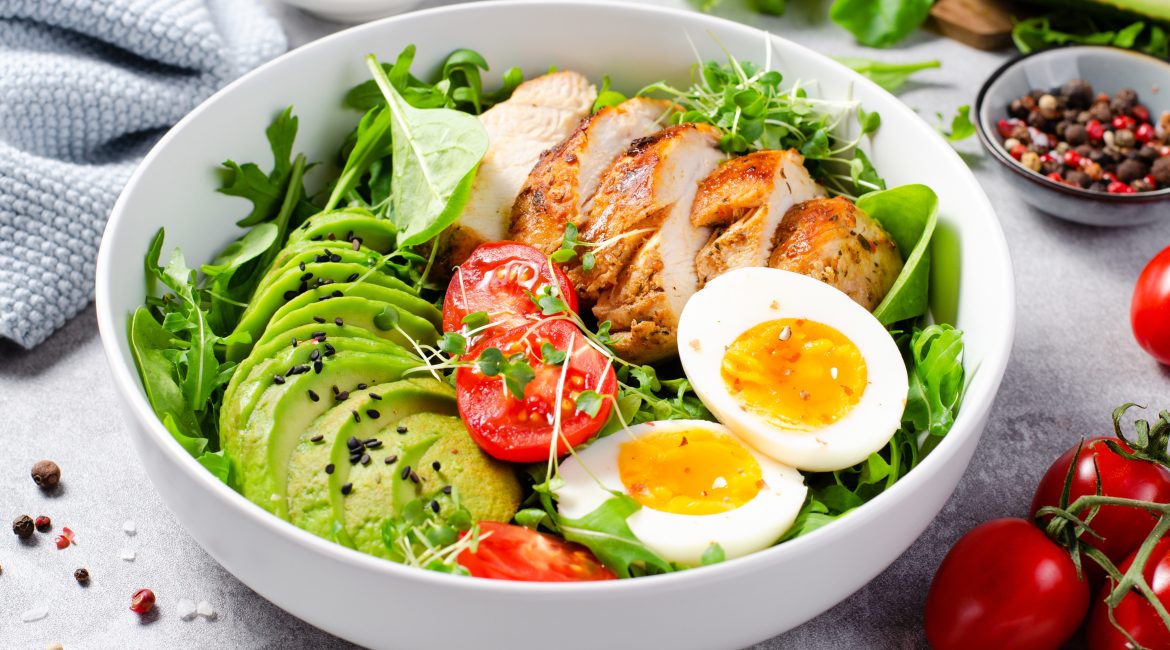We delve into the paleo diet basics to give you a better idea about this way of eating that’s growing in popularity.
The paleo diet, also known as the Stone Age or Caveman diet, has become hugely popular of late. The basis of this way of eating goes by one simple question: What would a caveman eat during the Stone Age? We explore what this diet involves, the pros, cons and what you need to know as to whether or not this is the right diet for you.
The inspiration for the paleo diet is rooted in ancient times. The people who created this diet felt that the human body was still meant to eat the way that our ancestors did during the palaeolithic age, also known as the Stone Age.
The founder of this way of eating, Dr Loren Cordain, believes that our bodies are programmed to eat this way, suggesting that modern food is not suitable for our digestive systems and metabolisms.
Read: The Ketogenic Diet: What It Is & If It’s The Healthy Choice for You
Paleo diet basics: what foods can I eat?
This paleo diet basics requires you to stick to foods that existed before modern farming and the agricultural revolution, which happened about 10,000 years ago.
The menu consists of food that could have been gathered, hunted or fished. So you can eat eggs, chicken, veggies, shellfish, meat, fish, roots, berries and fruits.
You are not allowed to eat grains, legumes (lentils, peas and beans), sugar, salt and dairy.
Is the paleo diet considered healthy?
Well, the paleo diet basics, which is cutting out processed foods, is one that is healthy and will have positive effects in terms of weight loss and health. But, of course, cutting out whole food groups could lead to some nutritional deficiencies.
By cutting out dairy, this could lead to calcium deficiency, and eliminating whole grains and starch could reduce your fibre intake. Your gut microbiome thrives off the digestion of fibre, which could lead to digestive issues as a result.
However, you can find calcium in other foods such as fish and leafy greens, and fibre is found in fruits and veggies.
As we mentioned, when sticking to the paleo diet, you are cutting out a large number of processed foods. But when you cut out all processed food sources such as tempeh or tofu, then you need to ensure you are not replacing these proteins with a significant amount of red meat.
Experts suggest you should not eat more than 70 grams of red meat per day.
Then there is the issue of eating fatty cuts of meat which can be high in saturated fats. We need some fats in our diets to help absorb vitamins from the food we eat, but an excess amount of fat can raise your cholesterol and increase your risk of heart disease.
Read: 5 Simply incredible ways to improve your heart health
This is why you should not eat more than 30 grams of saturated fat per day for men and 20 grams of saturated fat per day for women.
All in all, there are some benefits to the paleo diet, but there is a lack of scientific evidence for this way of eating helping to prevent or treat medical conditions. If you are wanting to start this diet, you need to make sure you chat to a dietician about what forms of food you can eat and how much of certain food groups you are allowed according to your body and health.
Things to know about the paleo diet
The paleo diet comes with a lot of meal prepping, planning and mental blocks. For example, eating out when you are sticking to a diet free from salt, dairy and processed foods can be tricky. You might think you are safe with the chicken salad, but what kind of oil is the chicken cooked in? Are any of the salad toppings processed or loaded with extra salt?
It can be difficult to stick to the paleo diet long term and going on and off the diet can lead to weight fluctuations. Yo-yo dieting often starts with weight loss in both fat and muscle, but can often lead to weight gain, slower metabolism and increased insulin resistance.
Should I stick to the paleo diet if I want to lose weight?
There are no guarantees for the paleo diet leading to weight loss. Some small studies have seen this diet to be effective for short-term weight reduction. But remember, when you eliminate food groups and replace certain foods such as dairy and grains with other high-calorie sources, this can lead to weight gain.
However, a number of people have reported that the diet does in fact lead to weight loss, but many experts believe that this way of eating is not sustainable or balanced.
The final word
No one is exactly sure what a real palaeolithic diet would have consisted of, but the modern-day paleo way of eating does not stray too far from a healthy and balanced diet.
While sticking to the paleo diet basics could lead to short-term weight loss, you need to be careful of the health risks that come with eliminating whole food groups.
Health experts have noted that you can lose weight and improve your health through a balanced diet that includes modern pulses and grains, which can reduce your risk of health concerns such as cardiovascular disease.
Your Health Insurance Family,
Oneplan




